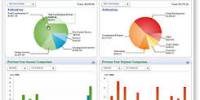Organizational capital is the value to an enterprise that is derived from organization philosophy and systems which leverage the organization’s capability in delivering goods or services. It is an important resource (asset) at both the micro (firm) and
macro (economy-wide) levels. It is a subcategory of intellectual capital focusing on the intangible value present of certain characteristics of an organization, due to the efforts by its employees to transfer their knowledge to the company.
Organizational capital enables tangible and intangible resources, such as machines, patents, brands, and human capital, to
be productive. It is one of the three components of structural capital, itself a component of intellectual capital. But, as with other intangible assets, there is no consensus definition of what this organizational capital is, how to measure it, or how to best quantify its contribution to output (either current or future). It is dynamic, and investments to create and foster it, need to evolve and change with the changing ways of doing business. It is these relationships, for example, particular organizational structures, that enable desired worker behavior to be evoked or fostered.
Organizational capital was first defined by Prescott and Visscher (1980) to be the accumulation and use of private information to enhance production efficiency within a firm. This capital can be a significant source of firm value.
The elements that constitute the organizational capital or capital of the firm, namely its culture, structure, organizational learning, can be a source of competitive advantage. Organizational capital is embodied either in organizational relationships, particular members of organizations, the organization’s repositories of information, or some combination of the above. Leif Edvinsson, former head of Intellectual Capital at Skandia, was among the first to recognize that intangible assets, including organizational capital, were not represented in traditional accounting systems. Pure organizational capital provides the best contrast with human capital because it is vested entirely in the relationships among workers, not in the workers themselves.
Research regarding Organizational capital suggests that there are implications for mergers and acquisitions. The organizational capital concept has great value in that it links organizational behavior insights regarding the contribution of organizational structure, culture, climate, patterns of interaction, socialization, etc. to the economic concepts of capital and productivity. Organizational capital can be decomposed into three firm-specific capitals; (i)Managerial capital which denotes managerial skills that mix all internal capabilities in an intelligible way through absorption and application of new ideas that promote growth and value of the firm, (ii) Process capital which includes production decisions on quality management, employee programs, efficiency in operations and organizational flexibility, (iii) Innovation capital that measures the ability of a firm in creating and nurturing new products and services for competitive advantage. Investment in organizational capital can also contribute to increasing an organization’s socially responsible behavior, the rationality of its decision-making, and the citizenship behavior of its members.
















